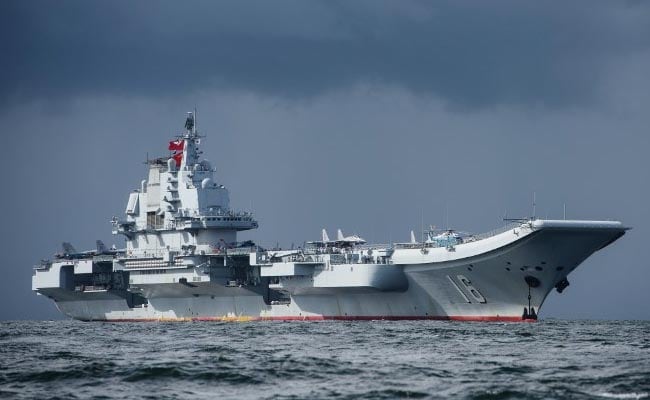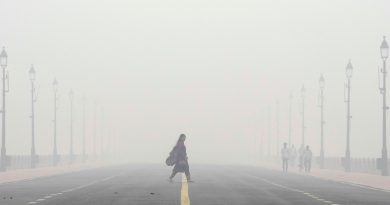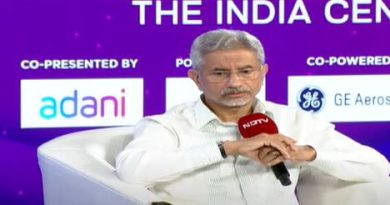Explained: How ‘The Quad’ Faces A Big Challenge By China-Led Unnamed Bloc
The Quad, a strategic security grouping which was formed to maintain peace, stability and freedom of navigation in the Indo-Pacific region, is facing a major challenge from an unofficial, unnamed alliance led by China, especially after the chronology of events in recent months leading up to, and beyond the latest Quad Summit in the United States.
The Quad, short for the Quadrilateral, is a group comprising India, the United States, Japan, and Australia. The grouping was formed with an aim to maintain security and freedom of navigation in the Indian Ocean and the Pacific Ocean. The Quad was first set up in 2007, but ceased to exist in 2008 following the withdrawal of Australia. The group was re-established in 2017 by Prime Minister Narendra Modi, then US President Donald Trump, then Japanese PM Shinzo Abe, and then Australian PM Malcolm Turnbull.
China, which considers the grouping a threat to its expansionist policies in the South China Sea, Indian Ocean and Pacific Ocean regions, is now leading an unofficial, unnamed group to counter the Quad. The group comprises of China, Russia, Iran and North Korea.
Russia, which is facing an isolation from the West, especially United States and most of Europe over the Ukraine war, finds itself in a situation where it is heavily dependant on China, both economically as well as supply of select weaponry. Iran and North Korea too, find itself under heavy US sanctions and find itself in depending significantly on China.
Beijing, which aims to replace the United States as the leading global power, is leading its assertive, aggressive and expansionist policies by leveraging the ally’s which are dependant on it.
Here are the chronology of provocative events led by China to send a message to the Quad:
MESSAGE TO THE UNITED STATES
China launched an intercontinental ballistic missile (ICBM) from its territory deep into the Pacific Ocean on September 25, the first such test since 1980. The launch came days after the annual Quad Leaders’ Summit was held in Delaware in the US. The ICBM can reportedly target any location in the US in less than 30 minutes.
Beijing has downplayed the incident calling the test – a first in 44 years – “routine”.
China’s Ministry of National Defence or MND said, “The People’s Liberation Army Rocket Force (PLARF) launched an ICBM carrying a dummy warhead to the high seas in the Pacific Ocean at 08:44 on September 25th, and the missile fell into expected sea areas. This test launch is a routine arrangement in our annual training plan. It is in line with international law and international practice, and is not directed against any country or target.”
The missile hit the desired target near the exclusive economic zone of French Polynesia, not far from the Marquesas Islands. China sent its Yuan Wang 5 tracking ship near the landing site to collect data. New Zealand described the ICBM test as an “unwelcome and concerning development”. The US Air Force too deployed an RC-135S Cobra Ball aircraft to collect optical and electronic data on the missile and its warhead about halfway along its flight path.
The ICBM’s desired target was 12,000km from the launch site. The distance between China’s Hainan Island and Los Angeles in the US is just 12,100km. China therefore effectively demonstrated its ability to reach the US with this type of nuclear weapon in under 30 minutes. Beijing’s newer DF-41 has an even longer range.
This latest provocative test came at a time of heightened tensions with neighbours like Japan, the Philippines and Taiwan.
Taiwan’s Ministry of Foreign Affairs immediately tweeted, “PLA’s 1st ICBM launch in 44 years exposes the regime’s expansionist ambitions & malign nature. Taiwan vehemently condemns the PRC for its reckless moves destabilising the region & urges China to exercise restraint & cease all actions that undermine global efforts for peace.” This was more than a routine test. China was sending a signal, an intimidating one at that, Teipei said.
China has a 2009 agreement with Russia for each side to notify the other of ballistic missile launches, but so far China has rejected all such suggestions for a similar mechanism with the US.
MESSAGE TO JAPAN
On September 21 – the day that the Quad Summit was held in the US – China began joint naval exercises in the Sea of Japan. Russia’s Pacific Fleet had said, “A joint detachment of warships of the Pacific Fleet and Chinese Navy set out from Vladivostok to conduct the joint Russian-Chinese “Beibu/Interaction – 2024″ naval exercise,” adding that the naval exercises will include anti-aircraft and anti-submarine weapons.
Two days into the joint naval exercise near Japan, Tokyo protested a major provocation by Moscow, when a Russian patrol aircraft entered Japan’s airspace – not once, not twice, but three times. Japan’s Defence Minister Minoru Kihara had said, “We confirmed today that a Russian Il-38 patrol aircraft has violated our airspace over our territorial waters north of Rebun Island, Hokkaido, on three occasions.”
Japan had scrambled its F-35 fighter jets to warn the Russian military. (Photo: Lockheed Martin)
Japan had scrambled its F-15 and F-35 fighter jets to warn the Russian military over radio during the first two airspace breaches. Finally the Japanese Air Force jets had to resort to firing flares when the third incursion happened. This even prompted Tokyo to call Moscow through diplomatic channels to ensure such provocation doesn’t happen again. The Russian government has not commented on the air incursions.
A similar incident happened a month earlier, in August, when Japan had to fly out its air force jets when Chinese military aircraft entered its airspace. Tokyo had warned Beijing, calling it a “serious violation of our sovereignty.”
The China-Russia joint naval drill was also the “largest of its kind for three decades,” Vladimir Putin had said.
In the aftermath of these China-backed provocations, Japan, Australia and New Zealand sent a strong message to Beijing as their naval ships passed through the Taiwan Strait. JS Sazanami’s, a destroyer of the Japan Maritime Self-Defense Force and a navel vessel each from Australia and New Zealand – the HMAS Sydney (DDG 42) and HMNZS Endeavour (A11) – transited the Strait of Taiwan. This was the first ever that such an incident by Japan, Australia and New Zealand took place.
China reportedly sent five of its naval ships to close proximity of the Australian and New Zealand ships and carried out surveillance activity.
With regard to the incident by Japan, Beijing issued a statement via its foreign office spokesperson, who said, “China’s response to Japanese Maritime SDF vessel’s passing through the Taiwan Strait: The Taiwan question is a red line that must not be crossed. Japan must honor its commitment and be prudent on this issue, and not create disturbance for China-Japan ties and cross-Strait peace.”
CHALLENGE TO FREEDOM ON NAVIGATION IN INDIAN OCEAN
China, Russia and Iran have also increased their cooperation and activities in West Asia (Middle East). Last year, Beijing brokered a deal between Saudi Arabia and Iran, highlighting its presence in the Middle East. Both Beijing and Moscow have also condemned the killing of Iran-backed Hezbollah chief Hassan Nasrallah, in a stand against Israel.
Russia and Iran are also reportedly negotiating terms to arming Houthis in Yemen who are targeting merchant shipping vessels in and around the Red Sea and the Gulf of Aden. However, they are not targeting Chinese and Russian ships, reports suggest. With a rise in the number of attacks by Houthis, it poses a massive threat to freedom of navigation in the Indian Ocean.
Flames and smoke rise from an oil tanker which was attacked by Iran-backed Houthis in the Red Sea. (Photo: Reuters)
Iran-backed and Yemen-based Houthi terrorists have attacked and hijacked ships in the region for many months, affecting the global trade and maritime operations. These incidents are on the rise amid Israel’s ongoing war against Hamas and Hezbollah, both backed by Iran.
According to the US Maritime Administration, Houthis have launched over 50 attacks on shipping, resulting in casualties, vessel seizures, and disruptions to global trade routes. The campaign has forced shipping firms to seek alternative routes, impacting approximately 12 per cent of global trade that traverses the Red Sea.
THE NORTH KOREA THREAT
In the last few months, North Korea, which is reportedly backed by Beijing, has fired multiple ballistic missiles at the US, Japan and South Korea.
The projectiles were believed to have fallen into the sea. The development comes in the wake of North Korean leader Kim Jong Un seen inspecting a uranium enrichment facility in mid-September.
The US Indo-Pacific Command in statement said it was aware of Pyongyang’s “ballistic missile launches and are consulting closely” with South Korea and Japan, as well as other regional allies and partners.
(Photo Credit: Reuters)
“The United States condemns these actions and calls on the DPRK to refrain from further unlawful and destabilizing acts. While we have assessed that this event does not pose an immediate threat to US personnel, or territory, or to our allies, we continue to monitor the situation,” it said in a statement.
A New York Times report has said that US President Joe Biden had in March this year approved a classified document ordering US forces to prepare for possible coordinated nuclear confrontations with Russia, China and North Korea.
Amid these developments, Japanese Prime Minister Shigeru Ishiba has said that Japan faces its “most severe” regional security situation in the post-WWII era. “The security environment surrounding our country is the most severe since the end of World War II,” he said last month in his first speech as prime minister.
Disclaimer: (Only the headline and picture of this report may have been reworked by the KanoonKiBaat staff; the rest of the content is auto-generated from a syndicated feed.)
Source Link





